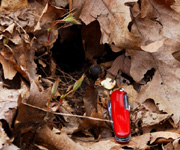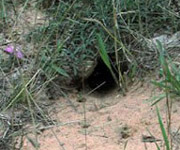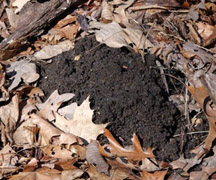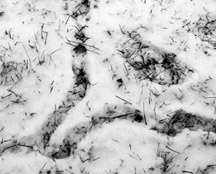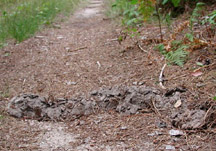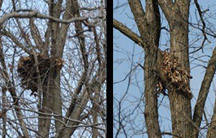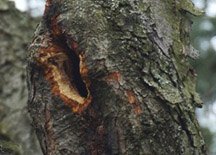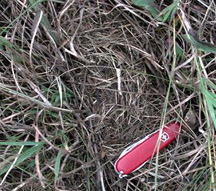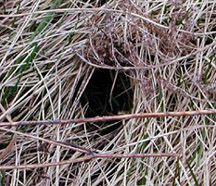Mammal Nests and Burrows
Like birds, mammals also create homes for themselves in a variety of places.
(click on photos to see a larger version)
Many mammals dig burrows in soil. This is common among rodents, such as woodchucks, eastern chipmunks, and thirteen-lined ground squirrels.
Opening of chipmunk burrow under construction. (Chipmunk will carefully hide the excavated earth when finished.)
Most insectivores, such as moles and shrews, burrow tunnels in the ground, leaf litter, or snow. The tunnels are nests and also a way to find food.
Moles create long lines of upturned earth as they tunnel through loose soil catching insects and other invertebrates.
Tree squirrels, such as grey squirrels and fox squirrels, build nests high in trees out of leaves.
Other mammals, such as white-footed mice, red squirrels, raccoons, and skunks, find natural cavities in trees or sheltered areas -- like under logs -- to build their nests.
Muskrats live near water. They construct lodges out of cattails and other marsh grasses.
Voles live in grassy areas. Voles build both underground burrows and above-ground runways and nests in the grass. If you see small openings in the grass that lead to mouse-sized tunnels both in the grass and into the ground, then you've found the home and foraging area of a vole.


